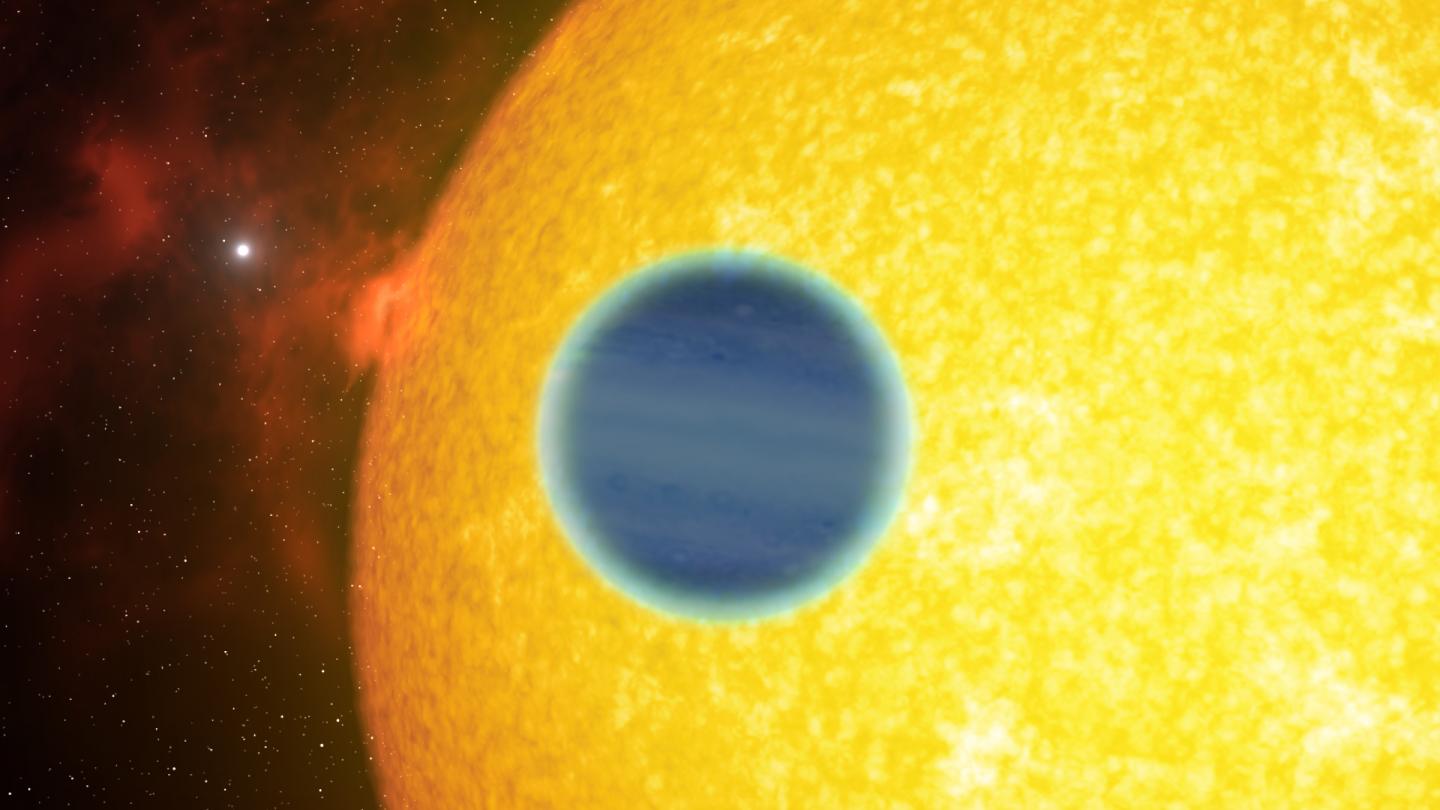Weird Stuff Swirls in Air of Huge, Puffy Alien Planet

An international team of astronomers has identified traces of metals and possible signs of water in one of the least dense exoplanets ever found, according to a new study.
The exoplanet, called WASP-127b, is about 1.4 times larger than Jupiter but only 20 percent as massive, with a surface temperature of 2,060 degrees Fahrenheit (1,127 degrees Celsius). WASP-127b, which was discovered in 2016, lies approximately 332 light-years away from Earth. The "hot Jupiter" alien world takes just over four Earth days to orbit its parent star.
Using the OSIRIS instrument on the Great Telescope of the Canary Islands (GTC),the researchers found a high concentration of alkali metals in the atmosphere of WASP-127b, including sodium, potassium and lithium. The presence of these metals suggests that the planet has partly clear skies, study team members said. [10 Exoplanets That Could Host Alien Life]
"The particular characteristics of this planet allowed us to perform a detailed study of its rich atmospheric composition," lead author Guo Chen, a postdoctoral researcher at the Instituto de Astrofísica de Canarias (IAC), said in the statement. "The presence of [lithium] is very valuable to understand the evolutionary history of the planetary system and could shed light on the mechanisms of planet formation."
The planet’s host star, WASP-127, is also believed to have an abundance of lithium. This suggests that this extrasolar system formed from a cloud of material that was enriched by a supernova, or the death of a giant star called an asymptotic giant branch (AGB) star, the researchers said.
In addition to traces of metal in the atmosphere, the researchers also found possible signs of water. However, further observations are needed to confirm the detailed nature of WASP-127b, according to the statement.
"While this detection is not statistically significant, as water features are weak in the visible [wavelength range], our data indicates that additional observations in the near-infrared should detect it with high significance," Enric Pallé, co-author of the study and a researcher at the IAC, said in the same statement.
Get the Space.com Newsletter
Breaking space news, the latest updates on rocket launches, skywatching events and more!
The team's new study is available on the online preprint site arXiv.org and will be published in the journal Astronomy & Astrophysics.
Follow Samantha Mathewson @Sam_Ashley13.Follow us @Spacedotcom,Facebook and Google+. Original article on Space.com.
Join our Space Forums to keep talking space on the latest missions, night sky and more! And if you have a news tip, correction or comment, let us know at: community@space.com.

Samantha Mathewson joined Space.com as an intern in the summer of 2016. She received a B.A. in Journalism and Environmental Science at the University of New Haven, in Connecticut. Previously, her work has been published in Nature World News. When not writing or reading about science, Samantha enjoys traveling to new places and taking photos! You can follow her on Twitter @Sam_Ashley13.









